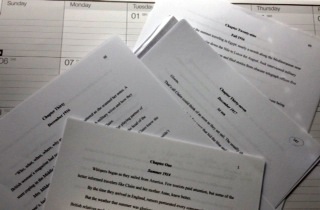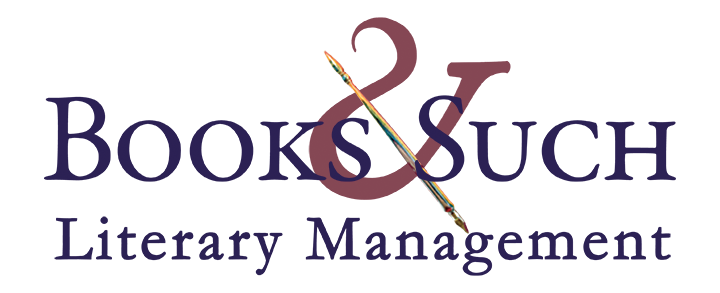Blogger: Michelle Ule,
filling in for the camping Rachel Kent
Following up on Mary’s blog from yesterday, now your manuscript is clean, how to put on the finishing touches!
It can be hard to know when you’re done, but when I reach a certain point in the work,I know it’s just about over.
The manuscript must be nearly complete when I’m reduced to looking at words–individual words–and thinking about how to improve them.
I’ve written before about using a word census; I think it’s an important tool and a necessary one when you’re at the end of refining those finishing touches.
Five steps to put the finishing touches on a manuscript
1. Read the manuscript in a different format.

I email it to my Ipad and read it there, making note of words I seemed to use too frequently.
Novelist Lori Benton reads her manuscript aloud–the entire thing. Your ear will enable you to hear words your eyes speed past.
(As an added bonus, you could read your manuscript into a tape recorder or other device, make a copy and give it to your mother for Christmas!)
I had ten pages of notes when I was finished reading on the Ipad. I returned to the manuscript and made the corrections.
2. Examine your usual problem words.
We all have some words we overuse, you know? The trick is to just go back through and find them. I have about a dozen darlings that turn up all the time.
How many of my “weaknesses” can you find in that paragraph?
Eight.
(That, all, have, some, back, about, turn, just)
I clean out those over-familiar words first!
3. Run a word census.
The Scrivener writing program has a word census feature built into it.
I don’t use Scrivener, so my husband wrote me a “macro” for my Word program and I ran that.
The list of words (one word per line plus the number of times used) was 195 pages long–or, half the length of my manuscript!
4. Review most commonly used words.
First you have to determine which words you’ve overused!
My macro told me I used 8962 different words.
Out of a 102,500 word document, I used “the” more than 5,367 times. The second most commonly used word was “to” at 2873 uses.
Others in the top ten include “and, a, her, you, in, Claire, of, I, she and he.”
Claire is our heroine.
Other than the protagonist’s name, the others are words your eyes read by without lingering. I needed to know what words indicate a potential problem.
5. Examine potential problem words.
You may have to read down into your list a distance.
“Have,” for example, was used more than 420 times in my manuscript.
It’s a perfectly fine verb, but it can be used as a compound verb and thus is problematic.
I worked through the manuscript using the “find” feature and examined every single “have” in the nearly 400 pages.
It took two hours.
I adjusted verbs, strengthened sentences, changed word orders and when I was done, only had 310 “haves” in the project.
 An interesting thing happened on the way to my finishing touches: the number of words in the entire manuscript shrunk. Click to Tweet
An interesting thing happened on the way to my finishing touches: the number of words in the entire manuscript shrunk. Click to Tweet
All that tightening up, simplifying verbs, strengthening word choices and rewriting sentences resulted in my manuscript’s word count reduced to 100, 435.
It reads much better now.
Both aloud and through the eyes!
What do you do to put the finishing touches on your manuscript?
How do you know when you’re done?

I storyboard. It’s a way of switching formats, I guess. The finishing touches are not really separate from the development process, but if you’ll bear with me, here goes:
The MS begins life as a series of storyboards that detail the narrative arc. Then I write chapter-by chapter, staying as close to the original concept as possible.
Then I storyboard off the MS, and look for what I call holes, places that are not congruent with the mood and action.
Then it’s back to the MS, fixing the holes, and storyboarding again.
Along the way, extraneous words and problem phrases seem to get squeezed out.
The trick, if there is one, is to stay disciplined – write the first draft directly off the original storyboards, without getting creative and embellishing. Then writing the second-wave storyboards directly from the first draft, again without trying to ‘improve’ things and skip a half-step in the process.
I know I’m done when I feel that the MS and the storyboards both tell the same story, with complimentary effectiveness. By complimentary, I mean that they cast an even light, as it were, from two directions to show the skein and structure of what I’ve written. When that light is in fact even, I’m done.
I wouldn’t really recommend this for anyone who’s not extremely visual, and extremely kinetic in their approach to life. It’s very labor-intensive, and sometimes feels a bit silly, if you get to feeling self-conscious.
I think that one advantage is that one looks at the work through a visual medium, and that’s probably how many readers approach books – they play them as movies in their heads, so to speak. I know that I do. If you can get it to work in both a literary and visual sense, the story’s probably got potential.
Storyboards or not, Andrew, you nailed it:
“The trick, if there is one, is to stay disciplined.”
You and Michelle both describe processes that take discipline. It is tempting to get a project 90% done and skip the last 10%. The fun is in the story, The satisfaction comes with the finish work.
I’m still working on individual chapters (non-fiction). The day will come when I read all the chapters in order–it will be like starting over. Makes me eager and anxious, equal doses of both!
You know, Shirlee, I see it as a puzzle. I also like to take quotes and clean them up for Twitter. It’s a game to see how best to say something in as simple a manner as possible.
And the day you put all the chapters together truly is an awesome moment of wonder! Best wishes!
Scrivener has this feature, too. Perhaps you’re using it, Andrew?
My brain doesn’t work this way, so I appreciate your comment about needing to be more visual for storyboards to work!
An interesting idea, too, about how we envision the story as a movie in our brain. I do that too, but have to be extra conscious in the writing that I include other senses beyond seeing.
I wonder how people imagined story 120 years ago before movies?
Nope, haven’t used Scrivener, but I’ll look into it.
Paintings used to be used to tell stories; if you look at some of Frederick Church’s larger canvases, there is a definite narrative taking place, using symbolism which would have been very clear at the time.
prior to that – several centuries prior – it was stained glass windows and sculptures, used to tell Bible stories to a largely illiterate population – it allowed the people to visualize what was being read to them.
Oh, and tapestries, as well!
Nice wrap up. Would you be willing to share your MSWord macro programming lines? Love the one of most common words. One of the main reasons why I prefer Word over Scrivener is the ability to write custom macros.
Send me an email to Michelle@booksandsuch.com. My husband has written out directions. No guarantees from me–he’s the expert and said he made it as simple as possible.
I appreciate the “find” feature. I probably do the same as you, Michelle. I search for those typical overused words and find a way to exclude them and make my sentences shorter (and try not to replace it with another problematic word! :)).
I also like reading it out loud.
Thanks for sharing, Michelle! I’ve definitely found that reading my work in a different format helps.
Just yesterday I did a “find” for the word “was” and as I corrected verb issues, I dropped my manuscript by almost 600 words. Scary!
I also see huge differences when I read it on my ipad – I too then have to address those issues.
Michelle, this was a GREAT blog post – and so helpful!
It’s truly amazing, isn’t it, how when you really look at those verbs, you can tighten up the entire manuscript.
I was just thinking some of this may be regional, the overuse of words, or signifying your language group. For whatever reason, I tend to say things like “I’ve got to go get . . . ”
No. I’ve got to get, or I need–look at all the words that melt away!
WAS, I didn’t have the heart . . . but, I could still change it . . . ah, 325, but IS 423. This is a reporter’s story so using is and was are acceptable, all the same . . . maybe I get the word count lower, yet! 🙂
Using the word “must” is helpful, too.
I must get …
Slims down many sentences. 🙂
I use to dread revisions, but now I really enjoy the process. It has become a game for me. The game is called “Seek and Destroy That Which Shouldn’t Be There.”
I don’t do much destroying, mostly replacing. I call that “Replacement therapy.”
Thank you for the great tips, Michelle. Perfect timing.
Therapy for my manuscript. Thank you, Jim. That sounds much kinder than major surgery.
Great tips, Michelle. Thank you. 🙂
I’ve learned to read my writing aloud (both fiction and non-fiction)as soon as I think I’m finished. Even if I’ve proofread a manuscript numerous times and have gotten to the point that I feel it is error-free (as if that ever happens!) I always find errors, redundancies, and / or awkward sentences once I read the piece out loud. I recommend the method to everyone.
Blessings on your weekend!
Here’s a quote from a book I’m reading that talks about the importance of words:
“He would not become soft. It was exhaustion he wanted–it helped him write. He needed each of his words to appreciate the weight they bore. He felt like he was lifting them and then letting them drop to the end of his fingers, dragging his muscle to work, carving his mind open with idea.”
~Colum McCann’s Transatlantic (on Frederick Douglas).
This is great, Michelle! Speaking as an editor, I admire writers who willingly refine their manuscripts like this before submitting them. Speaking as a writer, I know it’s not easy. There’s a point at which we just want to be DONE … but we need not to get there too quickly.
You’re right, Diane. You sigh and think, now the real work begins, but once I get started, I become a fiend!
It’s hard, though, to read books that haven’t been scoured so closely. 🙁
I usually do what Rachel does: I go camping.
I read what the experts tell me I should do in order to say I’m totally finished. Then I sift through and discern what applies to my manuscript, and follow through.
I have a program called Natural Reader. Maybe some of you aren’t familiar with the program. What it does is read your manuscript aloud, either in a female or male voice. I couldn’t work without it.
Excellent suggestion, Jeane. I’ve tried having the Kindle read the manuscript out loud while I weed, but the GPS voice drives me crazy!